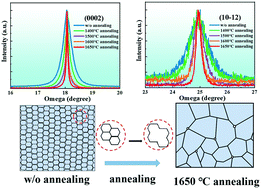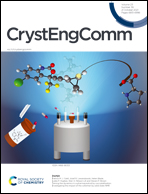Quality improvement mechanism of sputtered AlN films on sapphire substrates with high-miscut-angles along different directions
Abstract
Low dislocation AlN films are the key to prepare high-quality deep ultraviolet emission devices. So, how to reduce the dislocation of the films under the conditions of low cost and high efficiency has become a challenge in the film epitaxy growth. Therefore, this paper combined the magnetron sputtering and high-temperature annealing (HTA) technology, exploring thermal annealing of high-miscut-angle AlN films along different directions. High-resolution X-ray diffraction (XRD) and an optical microscope (OM) were used to characterize the film qualities. After annealing at 1400–1650 °C, the quality of sputtered AlN films improved significantly. The full width at half maximum (FWHM) of (0002) and (10–12) rocking curves decreased as the miscut angles of sapphire increased. The minimum values were obtained when the sapphire substrate had 4° miscut angles along from (0001) to the (11–20) direction. Raman spectroscopy, scanning electron microscopy (SEM), photoluminescence (PL) and X-ray photoelectron spectroscopy (XPS) further revealed the mechanism of enhancing the film quality by annealing. The essence of annealing to improve the film quality lies in the elimination of grain boundaries.

- This article is part of the themed collection: Crystal Growth


 Please wait while we load your content...
Please wait while we load your content...